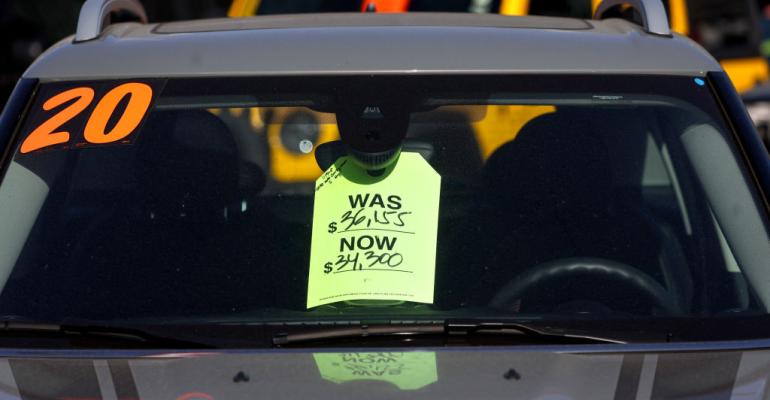After months of used-vehicle sales growth outpacing new-vehicle sales, that trend began to moderate in March, Cox Automotive analysts say.
“The retail vehicle market is showing clear changes in momentum in March,” Jonathan Smoke, Cox Automotive’s chief economist, says on a call discussing first-quarter economic and auto industry trends.
.
Total March new-vehicle sales were up 9% compared with March 2022, according to Cox. Smoke cautions against over-optimism, however.
March used vehicle sales are estimated to have fallen 6% year-on-year.
“I wouldn’t get carried away calling it a strong retail market in March by historical standards,” he says, because double-digit increases in fleet sales were a significant driver in the new-car segment. Supply was also a factor.
Based on data from Cox’s vAuto subsidiary, the used retail days’ supply at the end of March was 40 days, down four days from the end of February and 15% lower than the end of March 2022.
Meanwhile, new days’ supply at end-March was 56, down one day compared to end-February but up 58% compared to end-March 2022.
An increased number of lower-priced new-vehicle options helped boost sales, Smoke says.
Facing a microchip shortage, manufacturers prioritized higher-margin luxury vehicles over more affordable models, driving many consumers to the used market. But the microchip shortage has largely abated, and the product mix has responded accordingly.
Now, “Consumers are seeing a better mix of vehicles; areas that were not produced in the past are now in the market,” he says.
Credit conditions also began to favor new-vehicle purchases over used in March, says Smoke. Auto loans became easier to obtain in March than in February, though still 5.5% more difficult to obtain than in March 2022.
“The pool of buyers that were forced into the used market is going back to new,” says Smoke. “The traditional used-car market buyers are left, and they are the most challenged in terms of credit conditions and affordability.”
After ending 2022 with the sharpest decline in a single year, wholesale used-vehicle prices have regained some support, rising 1.5% in March compared to February though still down 2.4% from March 2022.
Though 2023 may see some negative monthly movement in wholesale pricing, Cox Automotive doesn’t expect a full-year decline, says Chris Frey, senior manager of economic and industry insights.
Supply remains down, and wholesale prices “should remain elevated for at least the foreseeable future.”
Used BEV Dealership Sales Up Sharply
New battery-electric-vehicle sales have been on the rise. Cox forecasts sales of new BEVs in the U.S. will top 1 million units for the first time in 2023.
As the volume of new BEV sales grows, so does the supply of used BEVs. Retail used BEV sales through dealerships rose 32% in the first quarter compared to the same quarter in 2022, according to Cox data.
That is an “important milestone,” Smoke says. “We expect greater sales of used EVs in the marketplace as the new-EV trade cycle increases.”
The number of wholesale BEVs processed at Manheim locations in the U.S. rose 40% in the first quarter compared to the same period in 2022 to nearly 9,800 units. In the first quarter, the wholesale value of used BEVs increased 3.7% year-on-year.
The number of Instant Cash Offers via Kelley Blue Book in the first quarter rose 144% to nearly 12,000. An Instant Cash Offer, made online through the KBB website, is a fixed offer for a used vehicle based on KBB Values which can be applied towards the next car purchase or used to sell the vehicle to a participating dealer. As the sheer volume of new BEVs sold increases, so does the volume of used BEV Instant Cash Offers, says Smoke. “It provides insight for what is a very hot segment in the vehicle market,” he says.
A growth rate of more than 4% in the overall market is unlikely in 2023, given supply constraints and the lack of used inventory, he says. “The biggest potential for growth in 2023 and moving forward is electric vehicles.”





